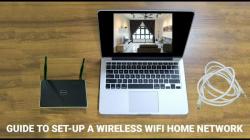How to make smiley symbols?
Creating smiley symbols or emojis can be done using keyboard shortcuts or by using character sequences. Here are some methods:
Using Keyboard Shortcuts:
Windows: On Windows-based systems, you can often use the
Win+.(period) orWin+;(semicolon) shortcut to bring up an emoji picker. Alternatively, using theAltkey plus numeric codes using the numpad (e.g.,Alt+128for ☺) might work in some applications.Mac: On Mac, using
Control+Command+Spacebarbrings up the emoji picker. Additionally, some smiley symbols can be typed using specific keyboard combinations, likeOption+:,Option+1, orShift+Option+), among others.
Using Character Sequences:
Colon-based Emoticons: Typing specific character sequences like
:),:-),:D,:-D,;),:-P, etc., often gets automatically converted into smiley emojis in various messaging applications and platforms.Unicode Emojis: You can also directly insert Unicode emojis into your text by copying them from emoji libraries or websites. For example:
- (U+1F60A) for a smiling face with smiling eyes
- (U+1F603) for a smiling face with open mouth
- (U+1F642) for a slightly smiling face
Using Emoji Libraries:
- Many word processors, messaging apps, and websites provide access to an emoji library or toolbar where you can select smiley symbols and emojis from a visual interface.
ASCII Art:
- For more creative smiley faces, you can create ASCII art, using keyboard characters to form more intricate or personalized smiley symbols. For instance:
- :-)
- :-D
- ^_^
Remember that the availability of emojis and their appearance might vary across platforms and applications. Emoji support depends on the software and the fonts installed on your device.
Experiment with these methods to create smiley symbols or emojis that suit your needs or convey the desired emotions in your messages or documents.
Creating Smiley Symbols Using Basic Keyboard Characters
Smiley symbols, also known as emoticons, can be created using a combination of basic keyboard characters, such as colons, parentheses, and hyphens. Here are some examples:
Happy face: :) or :-D
Sad face: :( or :-(
Winking face: ;) or ;-p
Tongue sticking out: :P or :-P
Heart: <3
Stars: :star: or :-*
Utilizing Online Emoticon Generators or Keyboard Layouts
For a wider variety of smiley symbols, you can use online emoticon generators or keyboard layouts specifically designed for smileys. These resources offer a vast collection of emoticons, including faces, animals, objects, and symbols. Some popular options include:
EmoticonDB: https://emojidb.org/
Dill Pickle Works: http://spontaneoussmiley.com/2010/01/happy-pickle-smiley/
Emoticon Keyboard: https://emojipedia.org/microsoft/windows-10/keyboard
Incorporating smiley symbols creatively in digital communication and writing
Smiley symbols can be used creatively in digital communication and writing to enhance expression, convey emotions, and add a touch of humor. Here are some tips for incorporating smileys effectively:
Use sparingly: Overusing smileys can make your message appear childish or unprofessional. Use them judiciously to emphasize key points or add a lighthearted touch.
Match the tone: Choose smileys that align with the overall tone of your message. For instance, avoid using playful smileys in a serious or formal context.
Consider the audience: Tailor your emoticon usage to your audience. Use familiar smileys that are widely understood by your intended recipients.
Use consistently: If you choose to use smileys, maintain a consistent style throughout your message to avoid a disjointed feel.
Be mindful of context: Consider the platform and purpose of your communication. Smileys may be appropriate in informal settings like social media or personal messages but less suitable in professional emails or presentations.
Smiley symbols can be a fun and effective way to add personality and nuance to your digital interactions. By using them thoughtfully and appropriately, you can enhance your communication and connect with your audience on a deeper level.












